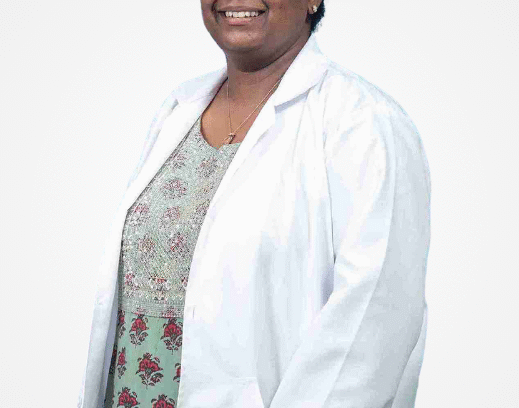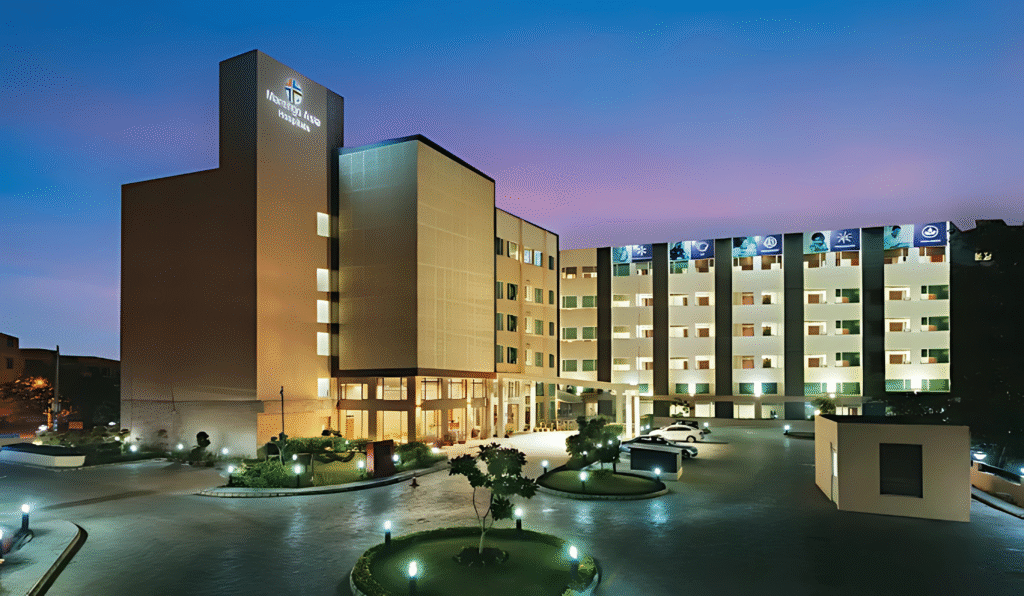Cost of Bone Marrow Transplant in India

What is Bone Marrow Transplant?
A Bone Marrow Transplant (BMT), also called a hematopoietic stem cell transplant, is a life-saving procedure where unhealthy or damaged bone marrow is replaced with healthy stem cells. These stem cells can regenerate the blood and immune system, and they may come from the patient themselves or a compatible donor.
Bone marrow is a spongy tissue inside the bones responsible for producing vital blood components. When it fails due to disease or damage, a transplant is often the only effective treatment.
A Bone Marrow Transplant is commonly used for:
Blood Cancers: Including leukemia, lymphoma, and multiple myeloma, where cancer affects blood or bone marrow.
Bone Marrow Failure Syndromes: Such as aplastic anemia, where the bone marrow stops making enough new blood cells.
Genetic Blood Disorders: Like thalassemia and sickle cell anemia, where defective genes disrupt normal blood production.
Immune System Disorders: Including severe combined immunodeficiency (SCID), where a child is born without a functioning immune system.
High-Dose Chemotherapy or Radiation Recovery: After aggressive cancer treatments that destroy bone marrow cells.
The goal of a BMT is to:
Repopulate the bone marrow with healthy cells that can produce normal blood cells.
Rebuild a functioning immune system to fight infections and diseases.
Cure or control underlying conditions affecting the blood or immune system.
When is Bone Marrow Transplant Performed?
A Bone Marrow Transplant is typically considered when a person’s bone marrow is:
No longer producing healthy blood cells
Damaged due to illness or medical treatment
Affected by genetic or autoimmune disorders
It is often used after other treatments have failed or when a high-intensity therapy is required to cure the disease.
BMT is performed in the following scenarios:
Cancer Treatment Response
When blood cancers like leukemia or lymphoma relapse after chemotherapy or require high-dose chemo/radiation, BMT helps replace the destroyed marrow.Bone Marrow Damage or Failure
In conditions like aplastic anemia, the bone marrow fails to produce enough blood cells, making transplant the most effective option.Inherited Blood Disorders
For diseases like thalassemia major or sickle cell anemia, where defective red blood cell production leads to chronic illness, a transplant can be curative.Genetic or Metabolic Disorders
In certain pediatric metabolic or immune disorders (e.g., SCID, Hurler syndrome), a transplant helps rebuild a functional immune system and metabolism.Multiple Myeloma or Lymphoma
When other therapies are ineffective or not curative, BMT can help prolong survival and improve outcomes.Autoimmune Disorders (Rare Cases)
For severe autoimmune diseases like systemic lupus erythematosus or multiple sclerosis, BMT is occasionally used in clinical settings when nothing else works.
Timing of the transplant is crucial. It’s often recommended when the disease is under control or in remission, to increase the chances of success.
Causes Which Lead to Transplant
A bone marrow transplant is considered when the bone marrow fails to produce healthy blood cells, which can be caused by several factors, including diseases, genetic conditions, and other external factors.
Here are some of the most common causes of bone marrow failure:
Blood Cancers
Leukemia: A cancer of the bone marrow and blood that leads to the production of abnormal white blood cells.
Lymphoma: A cancer that originates in the lymphatic system and can affect the bone marrow.
Multiple Myeloma: A cancer of the plasma cells in bone marrow that disrupts normal blood cell production.
Aplastic Anemia
A condition in which the bone marrow fails to produce enough red blood cells, white blood cells, and platelets. It can be caused by genetic disorders, toxins, infections, or autoimmune reactions.
Inherited Genetic Disorders
Thalassemia: A genetic blood disorder that causes the body to produce abnormal hemoglobin, leading to chronic anemia.
Sickle Cell Anemia: A genetic disease where the body produces sickle-shaped red blood cells, which can block blood flow and lead to pain and organ damage.
Fanconi Anemia: A rare inherited disorder leading to bone marrow failure.
Autoimmune Diseases
Systemic Lupus Erythematosus (SLE): An autoimmune disease where the immune system attacks the body’s own tissues, including bone marrow.
Rheumatoid Arthritis: Though rare, it can sometimes affect the bone marrow, leading to a decrease in blood cell production.
Radiation or Chemotherapy
Treatment for Cancer: Chemotherapy or radiation can damage the bone marrow, sometimes leading to bone marrow failure. A transplant is used to restore normal function.
Infections
Severe or chronic infections, such as HIV/AIDS, Hepatitis, or Tuberculosis, can also result in bone marrow suppression.
Medications and Toxins
Long-term use of certain medications, or exposure to chemicals, radiation, or heavy metals (e.g., benzene), can damage the bone marrow and lead to its failure.
Bone Marrow Disorders
Disorders like myelodysplastic syndromes (MDS) can cause ineffective blood cell production and abnormal cells in the bone marrow.
The appropriate diagnosis of the underlying cause is critical in determining if a bone marrow transplant is the right course of treatment.
Who is Eligible for a Bone Marrow Transplant in India?
Eligibility for a bone marrow transplant (BMT) depends on several factors, including the patient’s age, overall health, type of disease, and the stage of the condition. Not every patient with bone marrow failure or related diseases is a candidate for BMT. Here’s what is considered for eligibility:
Type of Disease
BMT is often recommended for blood cancers like leukemia, lymphoma, or multiple myeloma that are not responding to chemotherapy or have relapsed.
Inherited blood disorders like thalassemia, sickle cell anemia, or Fanconi anemia are also common conditions that may require BMT.
Aplastic anemia and myelodysplastic syndromes (MDS) may also make someone eligible for a transplant.
Age
Younger patients, especially those under 55 years of age, tend to have better transplant outcomes, but age alone is not a strict barrier. In fact, older patients (up to 70) can also undergo BMT depending on their overall health and fitness.
Health and Fitness
Good overall health is crucial. Patients who are generally healthy with normal organ function (liver, kidney, heart) have better chances of surviving the procedure and post-transplant recovery.
Comorbidities, such as heart disease or severe infections, can limit eligibility. Patients are evaluated carefully to ensure they can withstand the procedure.
Disease Stage
Early-stage disease with less damage to the bone marrow or other organs may make a transplant more effective.
BMT is usually more successful when performed in the remission phase of the disease (i.e., when the disease is under control or minimal).
Donor Compatibility
Patients need a compatible stem cell donor, either from themselves (autologous transplant) or from a sibling or unrelated donor (allogeneic transplant).
The donor’s stem cells should match the recipient’s human leukocyte antigens (HLAs) for the best outcomes.
Age of the Donor (for Allogeneic BMT)
Ideally, the donor should be between the ages of 18 and 40 for better stem cell quality and transplant success.
Older donors may still be used, but younger donors are preferred due to the higher quality of stem cells.
Risk of Disease Recurrence
If a patient has a high risk of relapse after other treatments or if the disease is progressing rapidly, a BMT may be necessary to provide a potential cure or long-term remission.
Family Support and Mental Health
A strong support system is crucial for a successful transplant journey. Mental health and emotional well-being are also important factors, as patients undergo intense treatment and recovery phases.
Eligibility is ultimately decided by a multidisciplinary team of doctors, which includes oncologists, hematologists, transplant surgeons, and other specialists. The team will evaluate the patient’s specific condition and medical history to make an informed decision.
Types of Bone Marrow Transplants
There are two main types of bone marrow transplants based on the source of the stem cells used in the procedure. The choice of transplant type depends on the patient’s condition and the availability of a suitable donor.
In an autologous transplant, stem cells are collected from the patient themselves before any chemotherapy or radiation treatment begins.
After the treatment to destroy diseased or damaged cells, the collected healthy stem cells are reintroduced into the patient’s body.
Advantages:
No risk of graft-versus-host disease (GVHD), as the patient’s own stem cells are used.
Lower chance of transplant rejection.
When it’s used: Commonly used for blood cancers like lymphoma, multiple myeloma, or certain types of leukemia.
In an allogeneic transplant, stem cells are obtained from a donor, either a matched sibling, a parent, or an unrelated donor who has a similar tissue type (HLA match).
This type of transplant is used when the patient’s own marrow is damaged or diseased and cannot function effectively.
Advantages:
Can potentially cure genetic or autoimmune blood disorders, such as thalassemia or sickle cell anemia, as well as cancers like leukemia.
Donor stem cells may offer an immune system boost to help fight any residual cancer.
When it’s used: Often used for blood cancers or genetic disorders where the patient’s own stem cells cannot be used.
Cord blood is obtained from a newborn’s umbilical cord after birth. It contains stem cells that can be used to regenerate a healthy blood system in patients.
The procedure is similar to an allogeneic transplant, but the stem cells come from the umbilical cord, which is often a source for patients who have no related donors.
Advantages:
Cord blood is often easier to match, even with slightly mismatched HLA profiles.
The use of cord blood stem cells is becoming increasingly common for pediatric patients.
When it’s used: Typically used when a related donor is not available, or when the patient has no ideal matched donor.
In a haploidentical transplant, the donor is a half-match, usually a parent or child, and the transplant is performed with a donor who shares one set of HLA genes with the recipient.
This option is often available for patients who do not have a fully matched sibling or unrelated donor.
Advantages:
Increased availability of potential donors.
Faster access to transplantation.
When it’s used: Typically used in situations where a fully matched donor is not available.
Why Choose India for Bone Marrow Transplant
India is a leading destination for bone marrow transplants due to its combination of highly skilled medical professionals, state-of-the-art healthcare facilities, and affordable treatment costs. Here’s why patients from around the world prefer to come to India for a bone marrow transplant:
India boasts a large number of internationally accredited hospitals with cutting-edge medical technology and advanced facilities that meet global healthcare standards.
The medical professionals are highly trained, many of whom have trained or worked in prestigious institutions across the world. Indian doctors are known for their expertise in bone marrow transplant procedures, ensuring the best outcomes for patients.
Compared to Western countries, the cost of bone marrow transplants in India is a fraction of the price, often saving patients up to 70-80% on treatment costs.
This makes India an attractive destination for medical tourists seeking high-quality care at affordable rates. Patients can also save on additional expenses like hospital stays, consultations, and post-transplant care.
Indian hospitals are equipped with world-class technology for stem cell extraction, transplant, and post-operative care. The infrastructure for intensive care units, recovery, and follow-up care is also top-notch.
Many hospitals specialize in stem cell research and have the ability to carry out the latest and most advanced transplant techniques, including autologous, allogeneic, and cord blood transplants.
Many hospitals in India are recognized by international organizations such as JCI (Joint Commission International), ensuring that the treatment provided is of the highest global standards.
Renowned hematologists, oncologists, and transplant surgeons with years of experience in the field lead transplant programs and perform successful procedures.
In India, patients can often receive treatment much faster than in countries with long waiting lists for bone marrow transplants.
The availability of donor stem cells, efficient matching processes, and quick scheduling mean that patients don’t have to endure long waits before receiving the care they need.
Indian hospitals are known for their personalized care and focus on treating the patient holistically. The medical team works closely with each patient to tailor the treatment plan to their specific needs.
Many hospitals also provide dedicated care coordinators to help international patients navigate the logistics of treatment, including travel, accommodation, and other requirements.
English is widely spoken by healthcare professionals in India, making communication with international patients smooth and hassle-free.
Medical professionals are trained to communicate effectively with patients from different linguistic backgrounds, ensuring clarity in explaining the procedures, risks, and post-transplant care.
- India offers comprehensive post-transplant care with specialized support for rehabilitation, medication management, and regular follow-ups to ensure the patient’s recovery and long-term success.
Patients can receive continuous guidance from experts to manage their recovery, which includes regular check-ups, lab tests, and emotional support.
Indian medical institutions are at the forefront of research in stem cell treatments, regenerative medicine, and innovative transplant techniques. Patients may benefit from access to the latest therapies and clinical trials that are not yet available in other countries.
India’s rich cultural heritage, beautiful landscapes, and welcoming environment provide patients and their families the opportunity to explore the country during their recovery phase.
Many hospitals also assist patients in arranging local tours and leisure activities to make their stay more comfortable and enjoyable.
Pre-Transplant Evaluation & Tests
Before undergoing a bone marrow transplant, patients need to undergo a thorough pre-transplant evaluation to assess their overall health and determine their eligibility for the procedure. These tests are essential for minimizing risks and ensuring the best possible outcome. Here’s a list of common tests and evaluations that are typically performed:
A detailed medical history is taken to understand the patient’s health condition, previous illnesses, and any treatments they have undergone.
A physical examination helps assess the general health and identify any underlying conditions that may affect the transplant process.
Complete Blood Count (CBC) to check for any existing blood disorders, anemia, or infection.
Liver and kidney function tests to assess the function of vital organs.
HLA Typing (Human Leukocyte Antigen Test) to match the patient with a suitable donor. This test helps ensure compatibility between the patient’s immune system and the donor’s stem cells.
A bone marrow biopsy is performed to examine the bone marrow and assess the presence of diseases like leukemia, lymphoma, or other blood disorders.
The biopsy involves taking a small sample of bone marrow from the hipbone for laboratory analysis.
- A chest X-ray is conducted to check for any lung or heart-related issues that could affect the success of the transplant or pose risks during the procedure.
- An ECG is used to check the heart’s electrical activity, ensuring there are no underlying heart issues that could complicate the transplant process.
- A pulmonary function test is conducted to assess the function of the lungs. This is especially important for patients who may need to undergo chemotherapy, which can affect lung function.
- Screening for infections such as HIV, hepatitis, and tuberculosis is done to ensure that the patient does not have any infections that could interfere with the transplant process.
A psychological evaluation is essential to ensure that the patient is mentally prepared for the transplant process and can handle the emotional and psychological challenges that come with it.
This may include counseling or therapy to address any concerns or fears.
- Patients may need to be up-to-date on certain vaccinations before proceeding with the transplant to minimize the risk of infections. This may include vaccines for diseases such as pneumonia, influenza, and hepatitis.
- Genetic testing may be performed to identify any hereditary conditions or mutations that could impact the transplant process or the patient’s long-term recovery.
If the transplant is allogeneic (from a donor), the donor also undergoes several tests to ensure they are healthy and compatible with the recipient.
This includes HLA typing, blood tests, and screenings for infectious diseases.
- Tests may be conducted to assess the function of other organs, such as the heart, kidneys, and liver, to ensure they are functioning properly and that the body can handle the strain of the transplant process.
Bone Marrow Transplant Procedure Overview
Bone marrow transplant (BMT) is a medical procedure used to replace damaged or diseased bone marrow with healthy bone marrow. The procedure can be life-saving for individuals with certain types of blood cancers and disorders. Below is an overview of the typical process for a bone marrow transplant:
The first step is the pre-transplant evaluation, which includes all the tests mentioned above to determine the patient’s eligibility.
Once the patient is deemed fit for the transplant, a pre-transplant chemotherapy or radiation therapy regimen may be prescribed to destroy the patient’s diseased bone marrow and make room for the transplanted marrow.
The treatment is intended to weaken the immune system to prevent it from rejecting the new marrow.
For autologous transplants, the patient’s own stem cells are collected prior to chemotherapy and stored for later use.
For allogeneic transplants, stem cells are collected from a donor. This could be from the bloodstream through a process called apheresis, or from the bone marrow itself through a surgical procedure.
In cases of cord blood transplants, stem cells are collected from the umbilical cord blood of a newborn.
The patient undergoes conditioning, which involves chemotherapy and/or radiation to destroy the diseased marrow and suppress the immune system. This process lasts several days and prepares the body to accept the transplanted stem cells.
The conditioning regimen is customized based on the patient’s condition and health status.
The healthy stem cells (from the patient or donor) are infused into the bloodstream through an intravenous (IV) line. This step is similar to a blood transfusion.
The stem cells will travel to the bone marrow, where they will begin to produce new, healthy blood cells.
After the transplant, the stem cells will begin to engraft in the bone marrow and start producing blood cells.
The process can take a few weeks to months. During this time, patients are closely monitored for signs of infection and graft failure.
After the transplant, the patient will require close monitoring for complications like graft-versus-host disease (GVHD), infections, and organ damage.
Post-transplant care includes regular blood tests to monitor the progress of the stem cell engraftment and immune system recovery.
Supportive treatments like blood transfusions, platelet infusions, and antibiotics may be required during the recovery phase.
The patient usually stays in the hospital for several weeks to a few months, depending on the progress of the recovery and the type of transplant.
During this time, the patient’s immune system will be weakened, and they will be at a higher risk of infections and bleeding.
Isolation precautions are often implemented to protect the patient from exposure to infections during this period.
- Regular follow-up visits are necessary to monitor the patient’s recovery, detect any complications early, and assess for signs of graft failure or disease relapse.
- Some patients may require additional treatments like immunosuppressive drugs to prevent GVHD or growth factors to help stimulate blood cell production.
Post-Transplant Care & Recovery
After a bone marrow transplant (BMT), the recovery process can be lengthy, and patients require careful monitoring and supportive care to ensure a successful outcome. Here’s a detailed breakdown of post-transplant care and recovery:
The initial recovery period typically takes place in the hospital, where the patient will stay under close observation for several weeks to a few months. During this period, the patient’s immune system is still weak, and they are at high risk for infections.
Blood transfusions, platelet infusions, and antibiotic treatments may be required to support the body’s recovery.
The patient will be monitored for signs of complications like graft-versus-host disease (GVHD) and organ failure.
- Due to the patient’s weakened immune system, infection control is crucial. The patient will be placed in a sterile environment, and the hospital staff will take extra precautions to prevent infections.
- The patient may need to avoid crowded places and people who are ill during the early recovery phase.
- Antifungal, antibacterial, and antiviral medications will be prescribed to prevent or treat infections.
During recovery, doctors will monitor the engraftment of the stem cells through regular blood tests to ensure the new bone marrow is producing blood cells as expected.
Engraftment failure or slow engraftment can occur, requiring additional medical interventions.
Patients may experience side effects like nausea, fatigue, loss of appetite, and mouth sores as a result of chemotherapy or radiation treatments.
Supportive therapies such as medications for nausea, pain management, and appetite stimulants may be given to help alleviate these symptoms.
GVHD occurs when the donor’s immune cells attack the recipient’s tissues. It can cause symptoms such as skin rashes, diarrhea, and liver issues.
To manage GVHD, immunosuppressive medications are used to control the immune response and prevent further damage.
Regular monitoring for early signs of GVHD is essential for timely intervention.
The recovery process can be emotionally and mentally challenging. Patients may experience anxiety, depression, or stress due to the prolonged hospitalization and physical recovery.
Psychological counseling, support groups, and therapies like cognitive behavioral therapy (CBT) can help patients cope with these emotional challenges.
It’s important for patients to have a strong support system, including family and friends, during the recovery phase.
Patients may experience muscle weakness and fatigue as a result of prolonged bed rest and chemotherapy treatments. A rehabilitation program that includes physical therapy and exercise can help improve strength, mobility, and overall well-being.
Gradual physical activity, once approved by the healthcare team, is essential for improving recovery and reducing complications.
After discharge, patients will require long-term follow-up care to monitor for complications such as infection, relapse, or GVHD.
Follow-up appointments may include regular blood tests, bone marrow biopsies, and imaging tests to ensure the patient is recovering well.
Long-term care may also include adjusting medications, managing chronic side effects, and helping the patient return to normal life activities.
- A well-balanced diet is essential for promoting healing and improving the patient’s immune function. Nutritional support will be provided to help the patient regain strength and manage side effects such as loss of appetite or weight loss.
- A nutritionist will guide the patient on maintaining proper nutrition during recovery.
- As the patient’s health improves, they may gradually return to normal daily activities. However, it’s essential for the patient to follow their doctor’s guidance regarding physical activity, work, and social interactions.
- Due to the immune system’s gradual recovery, it may take several months to a year before the patient can resume a full range of activities.
Risks and Possible Complications
While bone marrow transplant (BMT) can be life-saving, it is associated with several risks and potential complications due to the intensity of the procedure and the underlying medical condition of the patient. Below are the key risks and complications associated with a bone marrow transplant:
Infection
The patient’s immune system is weakened following chemotherapy and radiation treatments, leaving them highly vulnerable to infections.
Bacterial, viral, and fungal infections are the most common, and the patient may need antibiotics, antifungals, or antivirals to prevent or treat these infections.
Isolation precautions are necessary during the early recovery phase to protect the patient from exposure to infections.
Graft-Versus-Host Disease (GVHD)
In an allogeneic transplant, the transplanted stem cells come from a donor. The donor’s immune cells may attack the recipient’s body, leading to GVHD.
Acute GVHD can cause skin rashes, liver damage, and diarrhea, while chronic GVHD may lead to dry eyes, mouth sores, and lung problems.
Immunosuppressive medications are used to manage GVHD, but the condition can still result in long-term complications.
Graft Failure
Graft failure occurs when the transplanted stem cells fail to engraft and produce healthy blood cells.
This can lead to severe anemia, bleeding, and infection.
If graft failure occurs, a second transplant or additional medical treatments may be required.
Relapse of the Underlying Disease
There is a risk that the original disease, such as leukemia or lymphoma, may relapse even after the transplant.
Patients are closely monitored with blood tests and bone marrow biopsies to detect any signs of disease recurrence.
Organ Damage
Chemotherapy and radiation therapy can cause damage to organs such as the liver, heart, lungs, and kidneys.
Organ dysfunction can occur during the recovery process, requiring additional treatments to manage complications.
Blood Clotting Issues
Thrombocytopenia (low platelet count) can cause difficulty in blood clotting, increasing the risk of bleeding and bruising.
Patients may require platelet transfusions to manage low platelet counts during the early recovery phase.
Cataracts
Prolonged use of steroids to manage GVHD and other complications can lead to the development of cataracts (clouding of the eye’s lens).
If cataracts develop, they may require surgical removal.
Mucositis and Oral Complications
Chemotherapy and radiation therapy can cause mucositis, which results in painful sores in the mouth and throat.
Oral care and medications are essential to manage mucositis and prevent infection.
Long-Term Risks
Long-term complications can include infertility, growth issues in children, and an increased risk of developing secondary cancers due to the effects of chemotherapy and radiation.
Regular follow-up care is essential for early detection and management of these long-term risks.
Mental Health Issues
The emotional and psychological stress of undergoing a bone marrow transplant can lead to anxiety, depression, and post-traumatic stress disorder (PTSD).
Mental health support, counseling, and support groups are important aspects of recovery for patients and their families.
Chronic Fatigue
Many bone marrow transplant patients experience chronic fatigue due to the impact of the transplant on their body and the prolonged recovery process.
It may take months or even years for the patient to regain full energy levels.
Failure to Recover Full Blood Count
Even after successful engraftment, the patient may not fully recover their blood cell counts, which can result in long-term anemia or low white blood cell count (neutropenia).
Growth factors may be prescribed to stimulate blood cell production.
Success Rate and Life After Transplant
The success of a bone marrow transplant (BMT) is influenced by several factors, including the patient’s overall health, the type of transplant (autologous or allogeneic), the disease being treated, and how well the patient responds to the procedure. While BMT can be life-saving, understanding the success rates and what to expect post-transplant is crucial for patients and their families. Below is a breakdown of what to expect in terms of success rates and life after the transplant:
Overall Survival Rate: The success rate of bone marrow transplants varies depending on several factors such as the patient’s age, overall health, type of transplant, and the underlying condition being treated.
For autologous transplants (where the patient’s own cells are used), the success rate is generally higher because the risk of graft-versus-host disease (GVHD) and immune rejection is eliminated.
For allogeneic transplants (using a donor’s stem cells), the success rate is typically lower due to complications like GVHD, infection, and graft failure.
Five-Year Survival Rates:
The five-year survival rate for autologous BMT for conditions like lymphoma can range from 50% to 80% depending on the disease and patient condition.
For allogeneic BMT, the five-year survival rate can range from 40% to 60%, but this is also highly dependent on the patient’s response to the treatment, type of donor, and disease type.
Disease-Specific Survival:
Success rates also depend on the type of disease being treated. For example, acute leukemia has a lower success rate compared to lymphoma or myeloma, which may see higher long-term survival rates after successful transplantation.
Graft-Versus-Host Disease (GVHD) Impact: The risk of GVHD significantly affects the success rate of allogeneic transplants. Patients who develop acute GVHD may experience more complications, while those who develop chronic GVHD could face long-term issues but still survive for many years post-transplant.
Recovery Timeline:
The recovery process after a BMT can take several months to over a year. Patients typically experience fatigue, weakness, and a general lack of energy during the early phases of recovery.
Physical rehabilitation, including physical therapy and light exercises, is essential to help the patient regain strength and muscle function.
Emotional and mental recovery is equally important. Many patients experience depression, anxiety, and post-traumatic stress disorder (PTSD) following the transplant, which requires counseling and support.
Long-Term Monitoring and Follow-Up:
After a BMT, patients need to follow up with regular blood tests, bone marrow biopsies, and imaging studies to ensure that the bone marrow is functioning well and that there is no relapse of the original disease.
Long-term follow-up care typically includes monitoring for signs of secondary cancers (especially with allogeneic transplants), infections, and organ damage caused by chemotherapy and radiation.
Health Management Post-Transplant:
Patients may need lifelong immunosuppressive medications (especially after allogeneic transplants) to prevent rejection of the donor cells, which can increase the risk of infections.
Patients are also advised to maintain a healthy lifestyle, including a balanced diet, regular physical activity, and adequate rest to boost their immune system and overall recovery.
Infection prevention will remain a significant part of life post-transplant. Patients must take precautions like avoiding crowded places, practicing good hygiene, and receiving vaccinations as per their doctor’s recommendations.
Fertility and Long-Term Side Effects:
Many patients experience fertility issues after undergoing chemotherapy or radiation therapy, which can affect both men and women.
Growth issues may also occur, especially in children undergoing a transplant. Bone growth and physical development could be impacted by the treatments, and ongoing medical support is needed to manage these issues.
Endocrine problems, such as thyroid dysfunction and diabetes, may occur as long-term effects of chemotherapy and radiation.
Return to Normal Life:
Over time, many patients are able to return to work, school, and social activities, although they may still experience some physical limitations or ongoing medical treatments.
Emotional resilience and having a strong support system are crucial to reintegrating into normal life. Counseling or joining support groups can help patients adjust to life after a transplant.
Continued health care: Lifelong follow-up care is necessary to address any complications or late effects of the transplant, such as organ dysfunction or late relapses.
Several factors influence both the success rate and life after transplant, including:
The patient’s age and general health.
The type of disease being treated and whether the patient is in remission.
The donor’s match and the quality of the stem cells used in the transplant.
The presence of any complications like GVHD, infection, or organ failure.
The patient’s response to post-transplant treatments and medications.
Cost of Bone Marrow Transplant in India
The cost of a Bone Marrow Transplant (BMT) in India varies depending on multiple factors, including the type of transplant, the medical center, and the overall health condition of the patient. However, compared to many Western countries, the cost of BMT in India is significantly lower, making it a popular destination for medical tourism.
Here is a breakdown of the typical cost range for a Bone Marrow Transplant in India:
1. Cost Range for Bone Marrow Transplant in India
Autologous Bone Marrow Transplant (using the patient’s own stem cells): ₹15,00,000 – ₹30,00,000 (Approx. $20,000 – $40,000)
This type of transplant has a relatively lower cost since there are no donor stem cells involved, reducing complications and related costs.
Allogeneic Bone Marrow Transplant (using a donor’s stem cells): ₹25,00,000 – ₹60,00,000 (Approx. $33,000 – $80,000)
The cost of an allogeneic transplant is higher due to the need for a compatible donor, increased medication, and longer hospitalization.
Umbilical Cord Blood Transplant: ₹20,00,000 – ₹50,00,000 (Approx. $27,000 – $67,000)
This involves using stem cells from umbilical cord blood, which can be more expensive than the autologous method due to the specialized nature of the treatment.
2. Factors Affecting the Cost of Bone Marrow Transplant
Type of Transplant: Autologous transplants tend to be more affordable than allogeneic ones due to the absence of a donor search and the complexities involved with matching and immune suppression.
Hospital Location and Reputation: Renowned hospitals in cities like Mumbai, Delhi, Chennai, and Bangalore may charge higher rates due to their advanced infrastructure and specialized medical expertise.
Duration of Hospital Stay: The total cost is also influenced by the duration of the hospital stay, which can range from a few weeks to several months depending on the patient’s recovery, type of transplant, and any complications.
Pre-Transplant Evaluation: Extensive pre-transplant tests, including bone marrow biopsy, blood tests, and immunology assessments, add to the overall cost.
Post-Transplant Care: Regular follow-up visits, ongoing medication (especially immunosuppressive drugs), and any potential complications like graft-versus-host disease (GVHD) contribute to the long-term cost of treatment.
3. Additional Costs to Consider
Donor Search and Stem Cell Procurement (For Allogeneic Transplants): If a suitable donor is not available in the family, searching for an unrelated donor or using cord blood can add additional costs. Donor costs and stem cell harvesting procedures are separate from the core transplant fees.
Medications: Immunosuppressive medications and antibiotics are prescribed to prevent infections and organ rejection. These can increase both the cost and the duration of post-transplant care.
Travel and Accommodation: For international patients, travel expenses to India, including visa fees, accommodation, and transportation, should also be considered in the total cost.
Best Doctors for Bone Marrow Transplant in India
Best Hospitals for Bone Marrow Transplant in India
Med Travel India Offerings
How does Med Travel India help you?
Services offered by Med Travel India

Seamless Planning for Your Medical Journey
Before you even arrive, we take care of all the groundwork. From connecting you with top specialists to ensuring all necessary medical evaluations are completed, we make your journey stress-free. Our goal is to provide clarity and comfort before your treatment begins.
- Free Medical Consultation
- Personalized Treatment Plan
- Estimated Cost & Duration
- Visa Assistanc
- Second Opinion Service
- Pre-Arrival Coordination
Worry-Free Travel & Comfortable Stay
We ensure that your journey to India is as smooth as possible. From booking your flights to arranging a comfortable stay near your hospital, we handle everything so you can focus on your health.
- Flight Booking Assistance
- Accommodation Booking
- Airport Pickup & Drop
- Language Interpretation Services
- Local Transport Arrangements
- Currency Exchange Support


World-Class Medical Care, Personalized for You
We ensure that your medical treatment is well-organized and efficient. Our team works closely with hospitals to facilitate smooth admissions, consultations, and procedures, ensuring you receive top-quality healthcare.
- Priority Appointment Scheduling
- Direct Hospital Admission
- Specialist Doctor Assignment
- Pharmacy & Medical Supplies
- Hospital Admission & Discharge Support
- 24/7 Customer Assistance
Continued Support for a Speedy Recovery
Your health journey doesn’t end after treatment. We provide post-procedure assistance to ensure a smooth recovery, whether you stay in India for rehabilitation or return home.
- Post-Surgical Care Coordination
- Rehabilitation & Physiotherapy
- Virtual Doctor Consultations
- Diet & Lifestyle Guidance
- Extended Stay Arrangements
- Post-treatment Medical Supplies


Beyond Healthcare, A Comfortable Experience
We offer additional services to make your stay in India comfortable and enriching, ensuring that your well-being is cared for beyond the hospital.
- Medical Insurance Settlement Help
- SIm Card Assistance
- Customized Sightseeing Tours
- Medical Document Assistance
- Personalized Assistance for Family Members
- Concierge Services







































